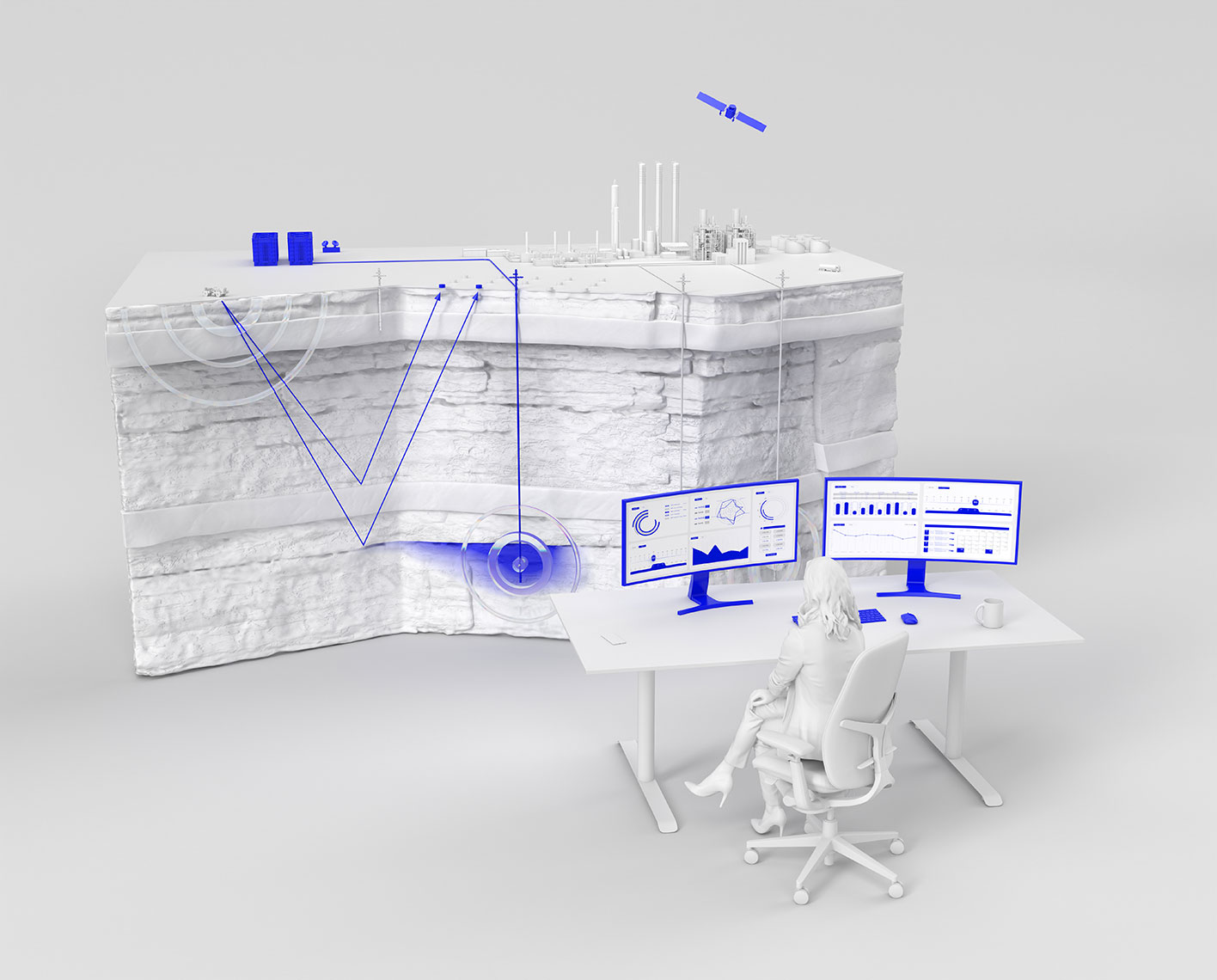Laying the groundwork for carbon storage success—the critical role of monitoring, measurement, and verification (MMV) plans
Published: 09/16/2025

Laying the groundwork for carbon storage success—the critical role of monitoring, measurement, and verification (MMV) plans
Published: 09/16/2025

With the effects of climate change already being felt globally, and 2024 having been the hottest year on record, calls for progress on net zero goals are louder than ever. With experts forecasting a 120-fold increase in CCUS volumes by 2050, it’s critical to ensure that stored CO₂ remains securely contained. A clear example citing long-term support of robust CCUS operations is the recent approval of the One Big Beautiful Bill Act. Not only did this reaffirm the generous Section 45Q tax credit from the previous administration, but it has also increased credits for utilization.
Monitoring, measurement, and verification (MMV) is the foundation for achieving secure CO₂ containment, ensuring regulatory compliance, operational efficiency, and public trust. By providing a structured approach to managing risks and monitoring CO₂, MMV plans are essential for scaling CCUS projects globally.
The importance of MMV planning
MMV plans serves as a blueprint to ensure safe and effective CO₂ storage. It establishes strategies to monitor injection operations, track CO₂ movement, and mitigate risks such as vertical leakage, lateral migration, induced seismicity, and many others. Beyond operational safety, MMV plans also ensure alignment with regulatory requirements, helping operators avoid penalties and maintain their license to operate. In jurisdictions like the U.S. and Canada, where public access to MMV plans is mandated, they also play a key role in fostering transparency and trust.
Cost optimization is another critical objective, and while some advanced monitoring technologies may be viewed as costly, they can be essential to accurately define risks in certain contexts. A well-crafted MMV plan balances these costs with project requirements, ensuring that resources are allocated effectively. Ultimately, effective MMV planning ensures CO₂ storage sites operate safely, cost-efficiently, and in compliance with evolving regulations, so that they are sustainable and successful over the long-term.
Challenges in current practices
Despite its importance, MMV planning faces significant challenges today. Many workflows rely on disconnected tools like spreadsheets and word processors, introducing inefficiencies and increasing the risk of errors. Additionally, incomplete knowledge transfer when personnel move roles can lead to continuity gaps—a serious issue for projects spanning decades.
Regulatory variability adds further complexity, as requirements differ across jurisdictions and evolve over time. For instance, U.S. regulations emphasize public transparency, while European standards for offshore projects may currently be less accessible. Public perception presents another challenge, particularly in projects near populated areas, where transparent MMV plans are often fundamental to gaining community support.
Digital tools transforming MMV planning
By addressing inefficiencies and enabling smarter decision-making, digital tools have the potential to revolutionize MMV planning. With integrated platforms we can streamline workflows by combining risk assessment, monitoring strategies, and reporting in one cohesive system. This eliminates the silos of traditional tools and ensures consistency and visibility across all phases of the project.
Enhanced traceability is a key benefit of digital tools. By documenting every decision and dataset, these solutions improve regulatory compliance and facilitate seamless knowledge transfer, even during personnel and stakeholder transitions. Templates and pre-populated risk registers further accelerate the planning process and are particularly useful for new teams or projects.
Digital tools also excel in cost-benefit analysis, enabling operators to optimize monitoring strategies. For example, they can identify where more expensive technologies are necessary while recommending cost-effective alternatives in lower-risk areas.
The dynamic nature of MMV plans
MMV plans are not static, they must evolve dynamically as projects progress into active operations. Thanks to real-time data integration this is now possible, through adapting to changing operational conditions, emerging technologies, and updated regulations. This ensures that plans remain responsive and relevant, even in the face of unexpected changes or anomalies.
In the early stages of injection, operators often employ more frequent and advanced monitoring to establish confidence with regulators and stakeholders. As operations stabilize and risks are better understood, monitoring frequency can be adjusted to reduce costs without compromising safety or compliance. This adaptability is especially critical for long-term projects that span decades, where operational conditions, technologies, and regulations are likely to change.
Post-injection monitoring requires a different approach than the injection phase. As the project transitions into this phase, MMV plans must adapt to account for new priorities, such as ensuring long-term containment and addressing any residual risks. Digital tools can make these adjustments seamless, enabling operators to update plans dynamically while maintaining alignment with regulatory requirements and operational realities.
Looking ahead: the future of MMV planning
The future of MMV planning lies in greater digital integration and innovation. Advanced tools powered by AI and machine learning are poised to transform how operators not only develop and execute MMV plans but continuously update and optimize their strategy for cost-effective MMV operations. These technologies can analyze extensive datasets to identify risks, recommend best practices, and simulate CO₂ behavior in subsurface reservoirs. Such insights enable operators to create more precise and effective monitoring strategies, saving time and resources.
Regulatory alignment will also benefit. Digital tools can incorporate changes in local and international regulations into MMV workflows, helping operators stay ahead of compliance requirements. For global CCUS projects, this capability is invaluable in navigating the complexities of multiple shifting regulatory frameworks. Additionally, enhanced transparency through digital platforms can strengthen public trust by providing stakeholders with accessible, clear, and accurate information.
Collaboration will also shape the future of MMV planning. By fostering data sharing and interoperability between operators, regulators, and technology providers, the industry can accelerate the adoption of best practices and drive innovation. This collaborative approach will be instrumental in scaling CCUS solutions to meet global climate goals.
As the CCUS industry expands to meet the demands of a net zero future, the importance of robust, dynamic, and transparent MMV planning cannot be overstated. By developing innovative solutions that empower operators to navigate the complexities of CCUS projects with confidence, embracing digital innovation, and fostering collaboration, the industry can ensure that CCUS fulfills its potential as a critical driver of climate progress.

Ekaterina Sorokina
Product Champion - CCUS Monitoring
Currently serving as the Product Champion for CCUS Monitoring within the Digital Sustainability organization at SLB, she is part of a team developing innovative digital solutions for carbon storage monitoring.
-

Digital Sustainability
Accelerating industrial climate actionMeet emissions reporting requirements, decarbonize, and scale new energy systems.
-

Measure
Measure your emissions accurately, consistently and transparentlyMeasure your emissions. Accurately, consistently and transparently.
-

Plan
Plan your best path to a more sustainable futurePlan your best path to a more sustainable future.
-

Act
Act to decarbonize and scale new energy systemsAct to decarbonize and scale new energy systems.
